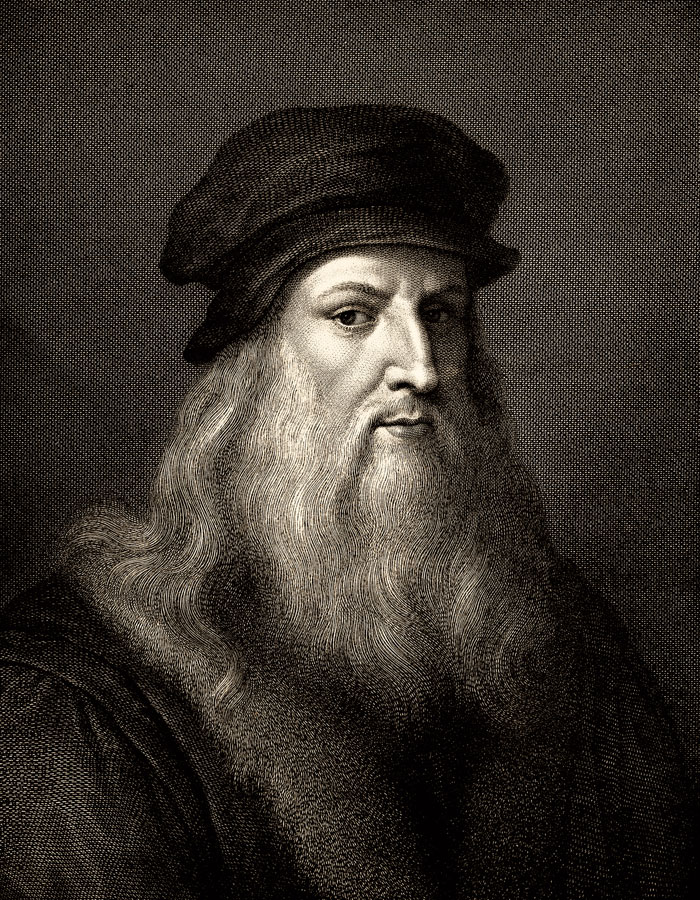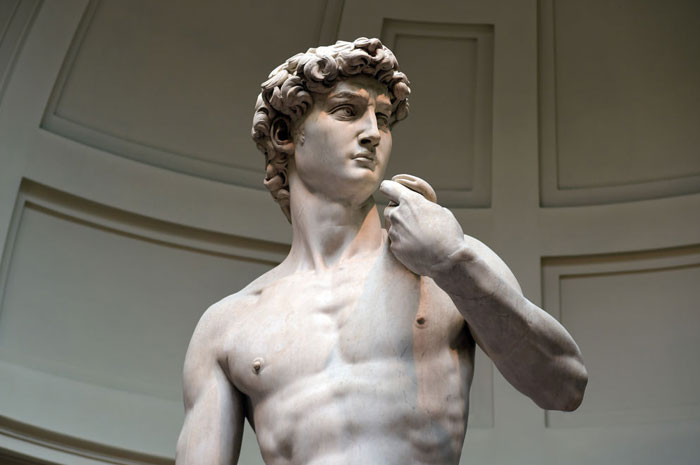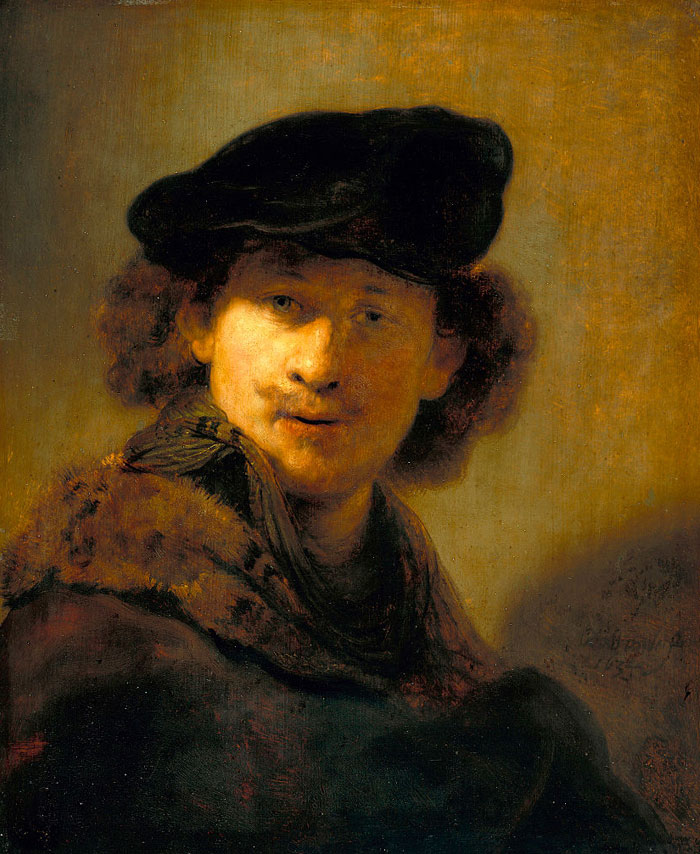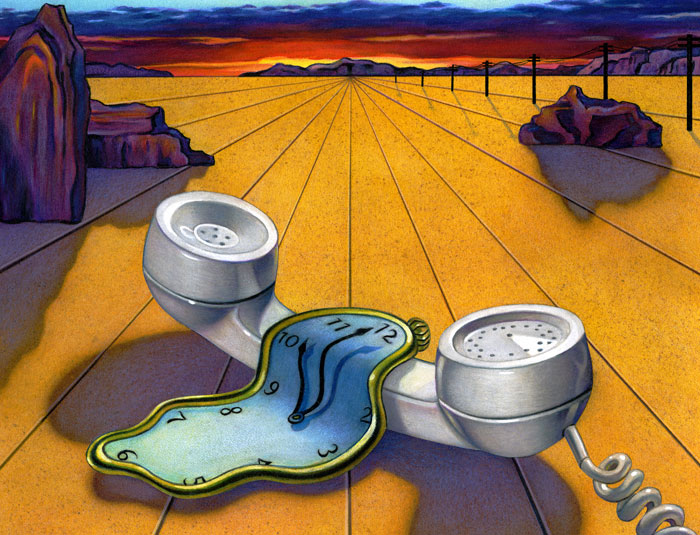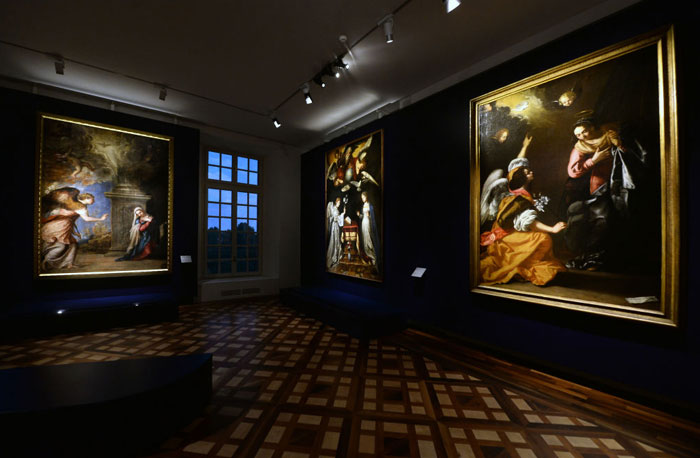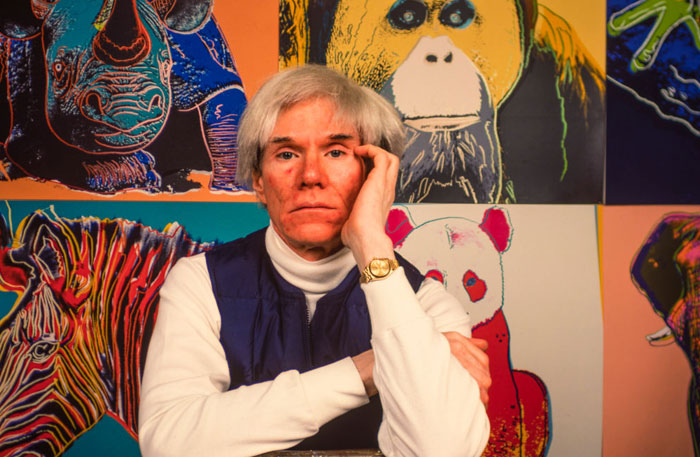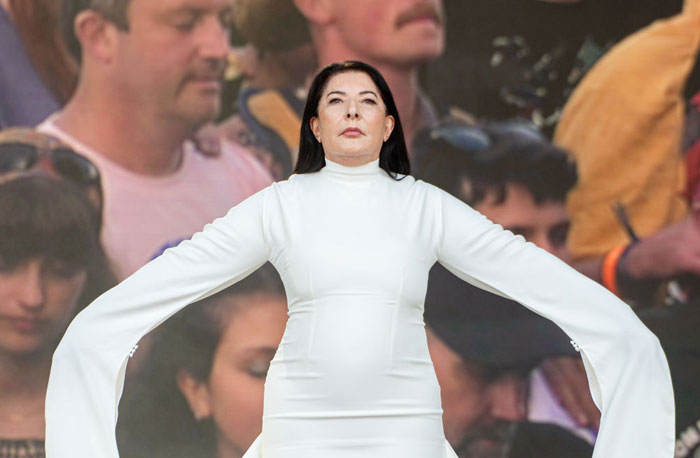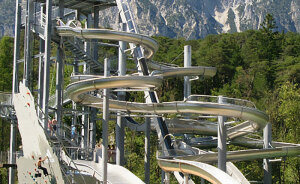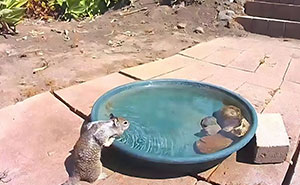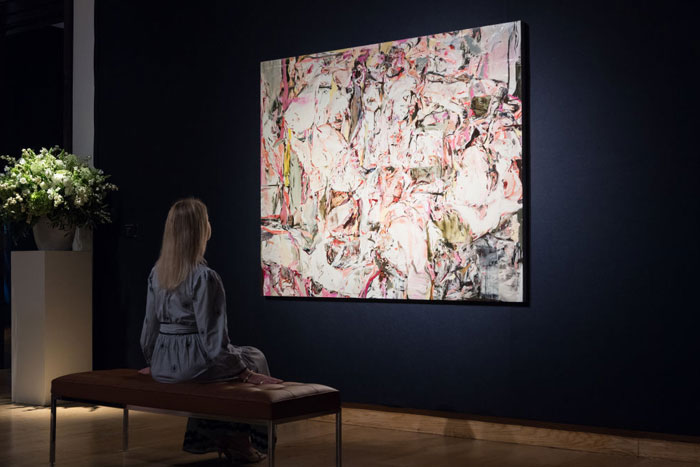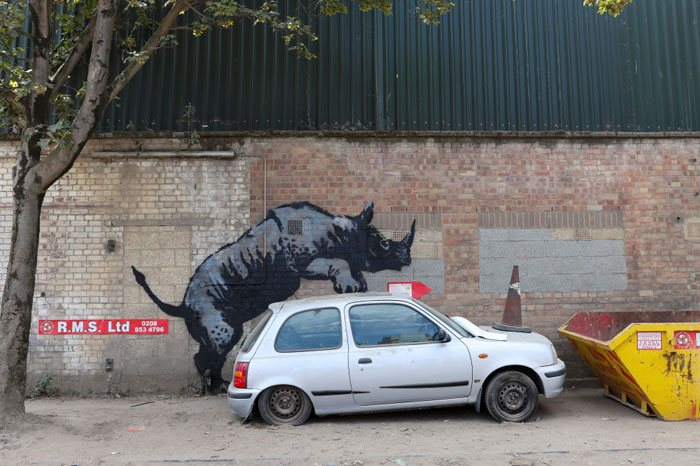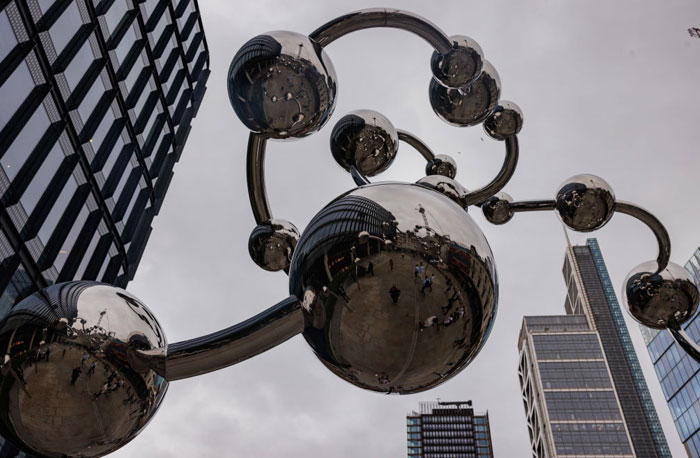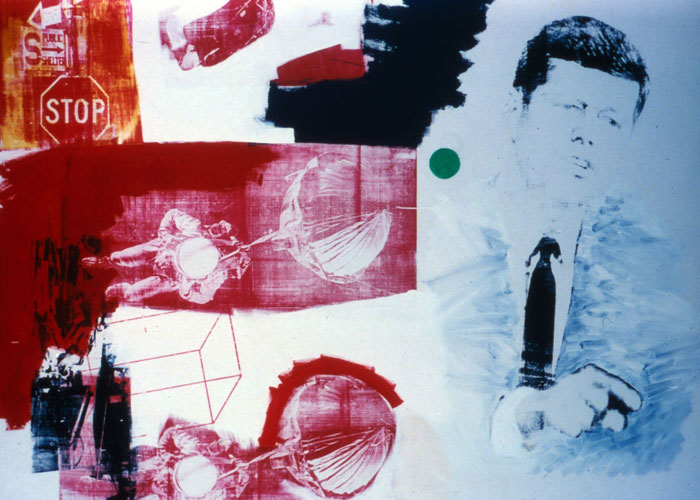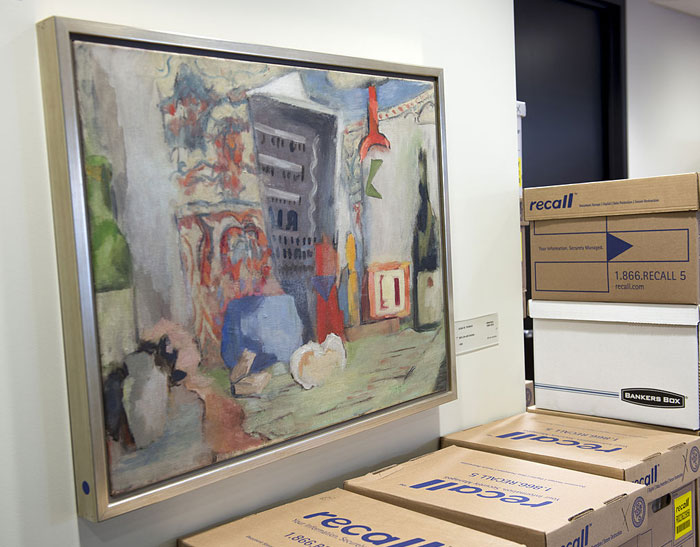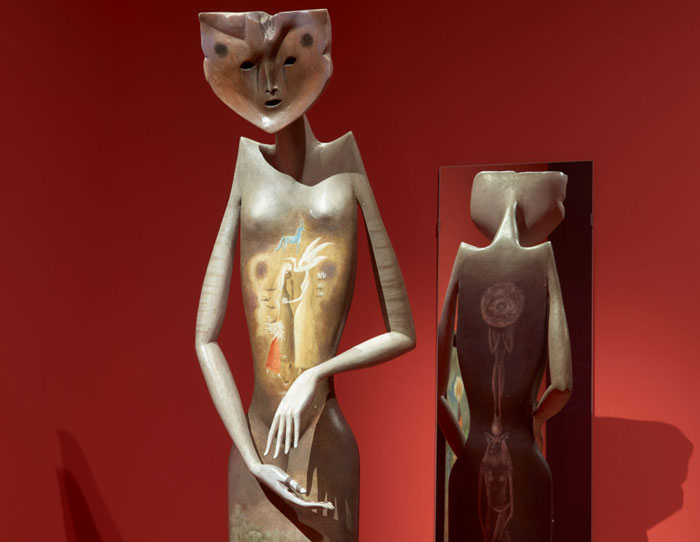Whether you admire the emotional canvases of the Italian Renaissance or get curious about contemporary art installations, art has the power to breach boundaries, evoke certain emotions, and inspire generations of aspiring creatives.
Learning about famous artists helps us understand our collective culture and history. By exploring their lives and works, we can gain insight into cultural influences that shaped their creative expressions.
In this article, we recognized some of the most famous artists of all time, highlighting their significant milestones, notable pieces, and experiences that gave birth to their unmistakable creativity.
Famous Artists Who Shaped the World of Art
Visionaries continuously influence our world, and the following creative geniuses are some of the most renowned artists to have ever lived.
This post may include affiliate links.
Leonardo Da Vinci (April 15, 1452 — May 2, 1519)
According to Carmen Bambach (The Met, 2020), Da Vinci constantly observed, experimented, invented, and drew (1). His work depicted most of his observations of the world around him, from nature to drawings of the human body and many modern technologies to his interest in physiognomy.
Da Vinci is known for famous works like The Last Supper and Mona Lisa, which changed the course of art. These works perfectly capture Leonardo’s view of the natural world.
His presence can be felt in movies and mainstream culture, and his iconic Mona Lisa at the Louvre Museum is widely regarded as an icon of mystery, beauty, and artistic mastery.
Michelangelo (March 6, 1475 — February 18, 1564)
Michelangelo was one of the greatest Renaissance masters who highly influenced the development of Western art. Known for his sculptures, paintings, poems, and, later, his architectural commissions, Michelangelo was considered the greatest living artist during his lifetime, according to Creighton Gilbert (The Met, 2024) (2).
His key piece on the ceiling of the Sistine Chapel led to his prominence, and his fame was further solidified by his marble sculpture David, which highlighted his love for sculpting and his knowledge of human anatomy.
Dr. Tamara Smithers from The Center for Public Art History asserts that Michelangelo’s works exemplify his renowned genius, elevating him to the standard-bearer for artists among humanists and popes and possibly the most celebrated artist of all time (3).
Rembrandt (July 15, 1606 — October 4, 1669)
Rembrandt is regarded among the greatest portrait painters and printmakers of all time. In the 2020 edition of The Leiden Collection Catalogue, Curator Arthur K. Wheelock noted that Rembrandt was renowned for capturing human emotions through intricate details and brushwork (4).
This skill stemmed from his early works, often featuring familiar people, including his family, friends, and people he encountered on the streets. He even painted his own self-portraits. His most significant works include The Night Watch and The Anatomy Lesson, featuring Dr. Nicolaes Tulp.
Claude Monet (November 14, 1840 — December 5, 1926)
Claude Monet was a French painter who, according to Laura Auricchio of the Department of Art and Design Studies at The New School for Design at Parsons, became the initiator, leader, and unswerving advocate of the Impressionist style — the style of painting Monet eventually became known for (5).
Monet started creating caricatures, which he sold when he was 15. Eventually, he studied drawing with a local artist to hone his skills. While his sketches were superb, his painting prowess made him a historical figure.
Among Monet’s famous works was the picturesque capture of the water-lily pond mural-sized canvases he made on his property in Giverny. As Auricchio beautifully put it, Monet’s renderings of plants and water “emerge from broad strokes of color and intricately built-up” — a style that has been imitated by many artists the world over.
Vincent van Gogh (March 30, 1853 — July 29, 1890)
Henri Matisse (December 31, 1869 — November 3, 1954)
Henri Matisse was known as a versatile artist who dabbled in many art forms and experimented with various media, including painting, drawing, sculpture, and graphic arts such as etchings, linocuts, lithographs, aquatints, paper cutouts, and even book illustration (The Met, 2004) (7).
According to Samantha Friedman, Assistant Curator of the Department of Drawings and Prints, Matisse’s breakthrough as an artist came during the summers of 1904 and 1905 (8). The fall of light across the South of France inspired him to create art with bright, prismatic shards of color in what he described as “construction by colored surfaces.”
Matisse’s career was the commission for the Chapel of the Rosary in Venice, which he completed between 1948 and 1951. For that commission, he created all the wall decorations, Stations of the Cross, furniture, stained-glass windows, and even the vestments and altar cloths.
Pablo Picasso (October 25, 1881 — April 8, 1973)
Pablo Picasso was a Spanish artist known as one of the most influential figures of the 20th century. He co-created the style of Cubism with Georges Braque. When we think of modern art, we often think of Picasso because of his portraits, in which he demonstrated his unique take on shapes and lines.
Picasso grew frustrated with traditional art school rules in Madrid and skipped classes to paint scenes of everyday life. Inspired by radicals and anarchists, he broke away from classical techniques, leading to a career total of experimentation (Biography, 2019) (8).
Picasso believed that different ideas required different styles, including his play of facial expressions, which is why his work varied so much. His later pieces, like Self Portrait Facing Death, showed a simple, raw style that still captured deep emotion and complexity.
Salvador Dalí (May 11, 1904 — January 23, 1989)
Salvador Dalí was a widely recognized Spanish artist and filmmaker known for his eccentric behavior and eerie, surreal paintings. Early in his career, he joined the Surrealist movement and continued to explore its ideas throughout his life.
While studying art in Madrid, Dalí mastered various styles but found his signature approach after discovering Freud’s theories on the subconscious and joining the Paris Surrealists (Britannica, 2024) (9).
His works often demonstrated an uncanny ability to depict distorted objects in dreamlike, irrational scenes, like his famous piece The Persistence of Memory. It featured melting clocks in a mysteriously calm landscape. Dali’s earlier work paved the way for artists who are inspired by surreal perspectives.
Jackson Pollock (January 28, 1912 — August 11, 1956)
For those who enjoy good paint-splatter artwork, Jackson Pollock was one of the originals. Pollock’s technique involved dripping and splattering paint onto a canvas on the floor, letting gravity and motion guide his work (MoMa, 2016) (10).
His “drip paintings” were about the paint’s movement, without focusing on any particular form. Pollock said he often lost himself in the process, not worrying about changes or mistakes because the painting took on its own life.
During the Cold War, Pollock’s work, along with other Abstract Expressionists like Rothko and de Kooning, was seen as a symbol of artistic freedom — a form of expression that battled the rigidness of the era. Pollock was influenced by Surrealism, Mexican muralists, and Picasso’s groundbreaking pieces.
Artemisia Gentileschi (1593 — c. 1656)
Artemisia Gentileschi achieved remarkable success as a female artist in the Baroque period. Her most famous painting depicts the Biblical Judith beheading Holofernes, which “emphasized Judith's stark strength rather than the societal portrayal of her as a mere temptress or noblewoman,” notes Hall Rockefel in a 2019 feature for the ThoughtCo (12).
This evocative image is often viewed as a self-portrait of revenge, reflecting Gentileschi’s life trauma. Many women artists look up to her because she is confident in her talent. She famously asserted that her work would demonstrate “what a woman can do,” much like the message of her famous self-portrait.
Gentileschi’s art, rediscovered in the 20th century, embodies the #MeToo movement, highlighting the ongoing struggle against sexual violence and the need for progress.
Famous Female Artists Who Redefined Creativity
Despite the odds and generations of artists, these women pushed for the feminine perspective and produced works of art that put women on the map of creativity.
Andy Warhol (August 6, 1928-February 22, 1987)
Andy Warhol was one of the most influential artists of the 20th century, famous for his silkscreened art and experimental films. He studied design at Carnegie Tech, learning fine art and commercial illustration.
In the 1960s, Warhol started creating art based on everyday consumer products like Campbell’s soup cans, which criticized the serious tone of abstract expressionism (Bibliographies, 2023) (11).
Warhol quickly became a pop art leader alongside Roy Lichtenstein and James Rosenquist. Warhol’s silkscreening made his art feel more like mass production, especially at his studio, The Factory, where he famously produced celebrity portraits and media-based works.
Georgia O’Keeffe (November 15, 1887 — March 6, 1986)
Georgia O’Keeffe made a lasting impact on American art for over seventy years, staying true to her unique vision. Lisa Messinger of the Department of Modern and Contemporary Art at The Metropolitan Museum explained that O’Keefe focused on capturing nature’s essential shapes and forms, often painting landscapes, flowers, and bones (The Met, 2004) (13).
O’Keeffe’s precise observation and artistic talent revealed beauty in these otherwise commonplace subjects. After studying at top art schools, she taught before gaining recognition from photographer Alfred Stieglitz, who promoted her work.
She later became known for her bold paintings of New York City and the natural beauty of New Mexico. O’Keeffe’s legacy continues to inspire artists and admirers of Contemporary art.
Frida Kahlo (July 6, 1907 — July 13, 1954)
Frida Kahlo is one of Mexico’s most renowned artists and a prominent pop culture figure. Though life had been tough on her, healing from an accident prompted her to start painting more, shaping her art sense and inspiring her work.
Her numerous self-portraits and recurring themes of loss, particularly her struggles with pregnancy and motherhood, also became central to her art, such as in Henry Ford Hospital. Though some have tried to label her works as surrealist, Kahlo wasn’t one for boxing her style to a classification, and according to Julieta Sanguino, she insisted she depicted her life experiences (El Pais, 2023) (14).
Judy Chicago (July 20, 1939 — present)
Judy Chicago (Judy Cohen) is among the most famous and influential feminist artists and activists. Chicago’s liberal Jewish upbringing encouraged her to make a difference, and she pursued art despite the gender biases in the male-dominated art world (Elephant Magazine, 2021) (15).
Early on, her emotional and sexual themes were criticized, leading her to suppress her creativity, but she was determined to assert her independence as a woman and changed her surname to Chicago in 1970.
Chicago moved away from minimalist art and embraced feminist themes, creating the Feminist Art Program to address gender inequality, like the co-organization of Womanhouse in 1972, a groundbreaking feminist installation in an old mansion.
Her works often focus on important women from history, as shown in her most famous work, “The Dinner Party,” which represents 39 significant figures in the history of women artists (The Collector, 2022) (16). Chicago’s later works, like “The Birth Project” (1980-85) and The “Holocaust Project” (1985-93), addressed broader human life and suffering themes.
Marina Abramović (November 30, 1946 — present)
Marina Abramović is a Serbian artist who has long challenged the limits of performance art through expressions on the boundaries of the body and the mind in extreme endurance art.
When interviewed by Alison Beard for Harvard Business Review in 2016, Abramović said she has no traditional studio and travels to remote places to draw inspiration from nature and diverse cultures and ultimately peel herself away from comfort and the familiar (17).
Abramović‘s art comprised her body form and her way of training the mind and body, allowing and accepting vulnerability. One of her most extraordinary works is “The Artist Is Present,” in which she sat motionless for over 736 hours.
Famous Male Artists Who Revolutionized Their Mediums
The unconventional use of various media is a testament to the creative power of this group of male artists. Not only did they think outside the box, but these artists have produced work that inspires others to look at things from a reinvigorated perspective.
Antoni Gaudí (June 25, 1852 - June 10, 1926)
Antoni Gaudí was a Catalan architect and a key figure in modern art, especially 19th-century architecture. His earliest works include designing lampposts, which exposed his extraordinary work to the public. Gaudí’s contributions were pivotal to Barcelona’s unique take on Art Nouveau and modernism (Artland Magazine 2020) (18).
Gaudí created groundbreaking architectural structures that reflected his deep Catholic faith and love for Spanish culture. His innovative approach showcased the structural beauty of nature while melding ancient and modern influences can coexist beautifully.
Some of his most famous works include Casa Vicens, Park Güell, Casa Batlló, La Pedrera, and the iconic Basílica de la Sagrada Família, which remains one of his greatest legacies found in the world today.
Marcel Duchamp (July 28, 1887 — October 2, 1968)
Marcel Duchamp was a revolutionary artist who profoundly impacted 20th-century art. Unlike many of his peers, Duchamp rejected art that simply pleased the eye, aiming instead to engage the mind (The Met 2004) (19).
His early work reflected Cubist influences, but his painting Nude Descending a Staircase caused controversy for its unique style. Duchamp is best known for his “readymades,” where he took ordinary objects like a bicycle wheel or urinal and declared them as art.
Duchamp’s art sensibilities challenged traditional ideas of artistic skill. His work, often filled with irony and iconic evocation of wit, paved the way for movements like Dada, Surrealism, and Conceptualism. Duchamp proved that beauty is definitely in the eye of the beholder as the talented artist took what is commonplace and made it extraordinary.
Ansel Adams (February 20, 1902 — April 22, 1984)
Ansel Adams was a pioneering American photographer renowned for his breathtaking black-and-white images of the American West, notably Yosemite National Park.
According to Emma Taggart (My Modern Met, 2020), Adam was initially on a path to becoming a concert pianist, but his life changed when he visited Yosemite. Inspired by the natural beauty, he turned to photography, using a Kodak Box Brownie camera to capture the splendor of the wilderness (20).
His 1927 photograph Monolith, the Face of Half Dome, marked a significant milestone. Abigail Cain described it as Adams’ first genuinely great photograph (Artsy, 2017) (21). It showcased his meticulous “visualization” technique and launched his artistic and commercial career.
Adams solidified his place in photography with the development of the Zone System, which plays with exposure techniques in black and white and is still taught today. His work became synonymous with conservation efforts, advocating for preserving the American wilderness.
Cecily Brown (1969-Present)
Banksy (Anonymous)
Banksy is one of the more controversial artists of today because he advocates a direct connection between an artist and his community—albeit with a hidden identity. Because of the interest his work has drawn over the years, Time magazine dubbed him one of the world’s most influential people in 2010.
Banksy’s artwork has invaded street corners in major cities around the world. He has remained anonymous throughout, but his influence has been constant. As curious as crowds are, most of his fans and followers don’t really want to know who the artist behind the famous street art is, as not knowing is part of his appeal. However, they do want to follow the upward trajectory of the “graffiti master, painter, activist, filmmaker, and all-purpose provocateur,” says Will Ellsworth-Jones (Smithsonian Magazine, 2013) (24).
Famous Artists Today Making Waves in Modern Art
The expressions of famous artists of the modern era are remarkable, and they tell the story of a culture that has grown ever more intriguing, colorful, and complex.
Yayoi Kusama (March 22, 1929 - present)
Yayoi Kusama is known for her colorful, out-of-this-world shapes, renders, and concepts — and there’s due cause for all that creative whimsy. According to Tim Adams of The Guardian, Kusama’s life has been more estranging than her obsessive work and how one informs the other (The Guardian, 2019) (25).
The 89-year-old Japanese artist lived voluntarily in a psychiatric hospital for over 40 years, and her art ideas were born in those confines. She creates work based on images drawn from her hallucinations.
Many motifs that have become Kusama’s trademarks were rooted in this practice of chronicling the images from her imagination. For some artists, being out of touch with reality may be the end of their careers, but Kusama found a way to manage her mania and direct it toward her creativity.
Kehinde Wiley (February 28, 1977 — present)
Kehinde Wiley is a famous black artist who reimagined the Western portrait tradition with Black protagonists. He was also known for his commissioned painting of former President Barack Obama.
According to The Guardian feature in 2021, though his paintings are clear themes of race, Blackness, and identity in Wiley’s works, his paintings don’t attempt to be overtly political (34). He describes his work as “atheist” because the last thing he wanted to do was preach. Instead, he wants to give people something to celebrate.
Wiley found the glorious portraits of aristocrats and royal families beautiful but saw the masterpieces from the Baroque, Rococo, Renaissance, and Dutch Golden Age as displays of European power, wealth, and beauty. “What I wanted to do was to take the good parts, the parts that I love, and fertilise them with things that I know to be beautiful – people who happen to look like me,” he told The Guardian.
Arshile Gork (April 15, 1904 — July 21, 1948)
Arshile Gorky was a groundbreaking artist who helped shape Abstract Expressionism, but his story is just as intriguing as his work. Born in Armenia as Vostanik Manoug Adoian, Gorky survived the Armenian Genocide before moving to the US. There, he reinvented himself, and his art eventually found its way into famous museums like MoMA and the Tate Modern.
According to Lily Toroyson (H-Pem, 2018), Gorky’s home in Sherman, Connecticut, played a massive role in his creative process. The quiet countryside setting reminded him of his homeland and inspired many of his paintings. Despite his success, Gorky faced serious personal struggles, which led to his tragic death by taking his own life in 1948 at just 44 years old (38).
Robert Rauschenberg (October 22, 1925 — May 12, 2008)
Robert Rauschenberg was a pioneering artist who redefined the boundaries between art forms and genres, significantly influencing 20th-century American and European art. Born in Port Arthur, Texas, Rauschenberg’s early life, including his dyslexia and pacifist work as a neuropsychiatric technician during World War 2, shaped his unique perspective on art and life.
Christopher Knight writes that Rauschenberg’s Bed (1955) and Monogram (1955-59), which mixed traditional painting with found objects, exemplified his hybrid approach (LA Times, 2008) (22). This bridged Abstract Expressionism and Pop Art while dabbling in Neo-Dada and Minimalism.
His win at the 1964 Venice Biennale secured his international fame, yet he constantly sought innovation, later experimenting with technology and performance art.
Jean Michel Basquiat (December 22, 1960 — August 12, 1988)
Jean-Michel Basquiat, a significant figure in the art world, rose to prominence in the 1980s. Starting as a graffiti artist with his pseudonym SAMO, Basquiat mocked materialism and gained attention for his rebellious, frenetic style (ARTnews, 2020) (23).
His early experiences, including a difficult family life and time spent living on the streets, profoundly influenced his art, which often incorporated symbols, anatomical references, and critiques of race and power.
Basquiat’s career skyrocketed quickly with his works reflecting the struggles of Black identity, seen in pieces like Irony of Negro Policeman and The Death of Michael Stewart, addressing racism and police brutality.
Despite his success, Basquiat struggled with addiction and the pressures of fame, leading to his untimely death at 27 from a heroin overdose.
Basquiat left an enduring legacy with substantial work and pieces that set auction records.
Underrated Artists That Deserve More Recognition
Some artists were ahead of their time and still wait for that elusive spotlight. We’ve pooled some artists whom we think deserve more accolades than they are getting.
Ai Weiwei (August 28, 1957 - present)
In a country like China, where dissent is dangerous, Ai Weiwei has become an infamous Chinese contemporary artist who stirs the pot. One of his most controversial artworks was Dropping a Han Dynasty Urn, which shows three photographs of Ai letting go of the historical urn and causing it to shatter in the final frame.
The Guggenheim Bilbao Museum describes the images as “equivalent to tossing away an entire inheritance of cultural meaning about China (26).”
Meanwhile, the artist claims his art’s core purpose is to promote free thought and speech.
His website’s homepage says: “Expressing oneself is a part of being human. To be deprived of a voice is to be told you are not a participant in society; ultimately, it is a denial of humanity” (27).
Hilma af Klint (October 26, 1862 — October 21, 1944)
Hilma af Klint, born in 1862 in Sweden, is now recognized as a groundbreaking abstract artist, yet she remained largely unknown for decades. Klint’s career kicked off when her major project, Paintings for the Temple, highlighted 193 stunning abstract pieces that aimed to reveal what’s hidden beyond our everyday reality (Domestika) (35).
Klint painted privately and didn’t share her work until after her death, following her wish to keep it hidden for 20 years. So, we don’t see her stunning pieces, like her Swan Series and The Ten, until years later, writes Jessica Schneider (Automachination, 2021) (36).
Klint’s art blends bright colors squeezed straight, geometric shapes, and deep symbolism to reveal spiritual themes, making her a pioneer in the abstract movement. Sadly, many in the art world ignored her because her work didn’t fit traditional molds or generate revenue.
Alma Thomas (September 22, 1891 — February 24, 1978)
Alma Thomas was a pioneering African American artist known for her vibrant, colorful abstract paintings. She discovered her love for art when she came to Washington, DC, and became the first woman to earn an art degree from Howard University. Thomas spent 35 years teaching art while creating her own work, but it wasn’t until her retirement that her art flourished.
Inspired by nature, her garden, and even space exploration, Thomas developed her signature style in which her use of color laid the foundation of her work Rosie Lasso (The Thread, 2022) (37). She created stunning patterns of color that looked like mosaics. Her works, like Alma’s Garden and Mars Dust, captured both the beauty of nature and the wonder of space.
Leonora Carrington (April 6, 1917 - May 25, 2011)
Leonora Carrington was a key figure in the Surrealist movement, known for her dreamlike, imaginative works (The Collector, 2022) (39). Rebellious from a young age, Carrington rejected her privileged upbringing and pursued art. She moved to Paris in her 20s and started working with Surrealism, though she never fully fit in due to its male-dominated culture.
Carrington’s art was deeply personal, often reflecting her fascination with spirituality, mythology, and magic. She painted strange, fantastical creatures, frequently using small brushstrokes to create intricate details. Her work was influenced by her dreams and life experiences rather than the male-centric Freudian ideas embraced by many Surrealists.
Lygia Clark (October 23, 1920 — April 25, 1988)
Lygia Clark was a Brazilian artist and psychotherapist who transformed her life and career after her divorce. Initially trained in painting under Roberto Burle Marx, she honed her skills in Paris with renowned artists like Fernand Léger.
According to Liliana Padilla-Arevalo, by the 1950s, Clark became a crucial figure in the Neo-Concrete movement (Aware Women’s Artists, 2017) (40). She advocated for a more personal and organic approach to art and opposed rigid formalism.
Her notable series, Bichos (1960), featured interactive metal creations that invited viewers to reshape them, emphasizing participation in the artistic process. Clark’s art continued to evolve and shifted towards exploring sensory experiences, with pieces like Luvas Sensoriais (1968) and A Casa é o Corpo (1968) engaging participants in new ways.
References
- Carmen Bambach. “Leonardo da Vinci (1452–1519).” The Met, 2020. | http://www.metmuseum.org/toah/hd/leon/hd_leon.htm
- Creighton Gilbert. “Michelangelo.” Britannica, 2024. | https://www.britannica.com/biography/Michelangelo
- Dr. Tamara Smithers. “Who was Michelangelo?” Smart History, 2021. | https://smarthistory.org/europe-1300-1800/italy-16th-century/michelangelo/
- Arthur K. Wheelock, Jr. “Rembrandt as Universal Artist.” The Leiden Collection Catalogue, 4th ed., 2020. | https://theleidencollection.com/essays/rembrandt-as-universal-artist/
- Laura Auricchio. “Claude Monet (1840–1926).” The Met, October 2004. | https://www.metmuseum.org/toah/hd/cmon/hd_cmon.htm
- William Seitz. “Claude Monet: French Painter.” Britannica, August 19, 2024. | https://www.britannica.com/biography/Claude-Monet
- Magdalena Dabrowski. “Henri Matisse (1869–1954).” The Met, October 2004. | https://www.metmuseum.org/toah/hd/mati/hd_mati.htm
- Samantha Friedman. “Henri Matisse: French, 1869–1954.” MoMA, 2016. | https://www.moma.org/artists/3832
- Biography.com Editors. “Pablo Picasso Biography.” Biography.com, April 3, 2014. | https://www.biography.com/artists/pablo-picasso
- The Editors of Encyclopedia Britannica. “Salvador Dalí.’ Britannica, September 26, 2024. | https://www.britannica.com/biography/Salvador-Dali
- The Alfred H. Barr, Jr. Galleries. “Salvador Dalí.” Museum of Modern Art, 2024. | https://www.moma.org/collection/works/79018
- Annie Ochmanek. “Jackson Pollock.”Museum of Modern Art, 2016. | https://www.moma.org/artists/4675
- Hall Rockefeller. “Biography of Artemisia Gentileschi.” ThoughtCo., December 2, 2019. | https://www.thoughtco.com/artemisia-gentileschi-art-biography-4571308 (16)
- Lisa Messinger. “Georgia O’Keeffe (1887–1986).” The Met, October 2004. | https://www.metmuseum.org/toah/hd/geok/hd_geok.htm
- Julieta Sanguino. “Frida Kahlo: Her accident, inspiration and legacy in the art world.” El Pais, July 15, 2023 | https://english.elpais.com/culture/2023-07-15/frida-kahlo-her-accident-inspiration-and-legacy-in-the-art-world.html
- Chloë Ashby. “That’s the Chicago Way: The Uncompromising Life of Judy Chicago.” Elephant Magazine, September 19, 2021. | https://elephant.art/thats-the-chicago-way-the-uncompromising-life-of-judy-chicago-19092021/
- Stefanie Graf. “5 Works That Made Judy Chicago a Legendary Feminist Artist.” The Collector, October 27, 2022 | https://www.thecollector.com/judy-chicago-most-legendary-feminist-artist/
- Alison Beard. “Life’s Work: An Interview with Marina Abramović.” Harvard Business Review, November 2006. | https://hbr.org/2016/11/marina-abramovi
- (21) Adam Hencz. “Heaven on Earth – Gaudí’s Spectacular Architecture.” Artland Magazine, 2020. | https://magazine.artland.com/antoni-gaudi-biography-projects/
- Nan Rosenthal. “Marcel Duchamp (1887–1968).” The Met, October 2004. | https://www.metmuseum.org/toah/hd/duch/hd_duch.htm
- Emma Taggart. “10 Facts About Ansel Adams, the Pioneering Photographer and Environmentalist.” My Modern Met, October 24, 2020 | https://mymodernmet.com/ansel-adams-photography/
- Abigail Cain. “The Story Behind the Photograph That Made Ansel Adams Famous.” Artsy, February 18, 2017 | https://www.artsy.net/article/artsy-editorial-photograph-made-ansel-adams-famous
- Christopher Knight. “He led the way to Pop Art.” Los Angeles Times, May 14, 2008. | https://www.latimes.com/archives/la-xpm-2008-may-14-me-rauschenberg14-story.html
- Tessa Solomon. “Jean-Michel Basquiat’s Enduring Fame: Why the ’80s Art Star Remains Relevant Now.” ARTnews, December 22, 2020. | https://www.artnews.com/feature/who-was-jean-michel-basquiat-why-was-he-important-1234579679/
- Will Ellsworth-Jones. “The Story Behind Banksy.” Smithsonian Magazine, February 2013. | https://www.smithsonianmag.com/arts-culture/the-story-behind-banksy-4310304/
- Tim Adams. “Yayoi Kusama: the world's favourite artist?” The Guardian, September 23, 2018. | https://www.theguardian.com/artanddesign/2018/sep/23/yayoi-kusama-infinity-film-victoria-miro-exhibition
- Guggenheim Museum Bilbao. “Ai Weiwei, Dropping a Han Dynasty Urn, 1995.“ Guggenheim Bilbao. | https://www.guggenheim-bilbao.eus/en/learn/schools/teachers-guides/ai-weiwei-dropping-han-dynasty-urn-1995
- Anya Zhang. “Ai Weiwei: Blurring the Lines Between Artistry and Absurdity.” Harvard Political Review, September 6, 2023. | https://harvardpolitics.com/ai-weiwei-blurring-the-lines-between-artistry-and-absurdity/
- Ai WeiWei. Homepage. | https://www.aiweiwei.com/
- Jackson Arn. “Cecily Brown’s Attempt to Make Impossible Art.” The New Yorker, September 11, 2023. | https://www.newyorker.com/culture/the-art-world/cecily-browns-attempt-to-make-impossible-art
- Silvia Laboreo. ”Hilma af Klint: The Fascinating Story of an Abstract Art Pioneer.” Domestika. | https://www.domestika.org/en/blog/6019-hilma-af-klint-the-fascinating-story-of-an-abstract-art-pioneer
- Jessica Schneider. “Neglected, Rejected: Hilma af Klint in “Beyond the Visible (2019).” August 25, 2021. | https://www.automachination.com/neglected-rejected-hilma-af-klint-beyond-the-visible/
- Rosie Lesso. “The Trailblazer: Alma Thomas’s Spiritual Art.” The Thread, December 13, 2022. | https://blog.fabrics-store.com/2022/12/13/the-trailblazer-alma-thomass-spiritual-art
- Lilly Torosyan. “From Van to Sherman: Unearthing the unfinished legacy of Arshile Gorky.“ H-Pem Armenian Cultural Platform, May 28, 2018. | https://www.h-pem.com/en/Stories/2018/05/28/from-van-to-sherman-unearthing-the-unfinished-legacy-of-arshile-gorky/41
- Emily Snow. “Leonora Carrington: The Forgotten Surrealist Painter.” The Collector, March 6, 2022. | https://www.thecollector.com/leonora-carrington-surrealist-painter/
- Liliana Padilla-Arevalo. “Lygia Clark.” Archives of Women Artists, Research and Exhibitions, 2017. | https://awarewomenartists.com/en/artiste/lygia-clark/
- Rosie Lesso. “The Trailblazer: Alma Thomas’s Spiritual Art.” The Thread, December 13, 2022. | https://blog.fabrics-store.com/2022/12/13/the-trailblazer-alma-thomass-spiritual-art
- Lilly Torosyan. “From Van to Sherman: Unearthing the unfinished legacy of Arshile Gorky.“ H-Pem Armenian Cultural Platform, May 28, 2018. | https://www.h-pem.com/en/Stories/2018/05/28/from-van-to-sherman-unearthing-the-unfinished-legacy-of-arshile-gorky/41
- Emily Snow. “Leonora Carrington: The Forgotten Surrealist Painter.” The Collector, March 6, 2022. | https://www.thecollector.com/leonora-carrington-surrealist-painter/
- Liliana Padilla-Arevalo. “Lygia Clark.” Archives of Women Artists, Research and Exhibitions, 2017. | https://awarewomenartists.com/en/artiste/lygia-clark/
Poll Question
Do you believe understanding the legacy of famous artists is crucial for cultural education?
Yes, it's important
Somewhat, but not essential
No, it's not necessary
Unsure
every time I see that rhino pic I think "well son, when a rhinocerous and a compact car love each other very much..."
every time I see that rhino pic I think "well son, when a rhinocerous and a compact car love each other very much..."

 Dark Mode
Dark Mode 

 No fees, cancel anytime
No fees, cancel anytime 







